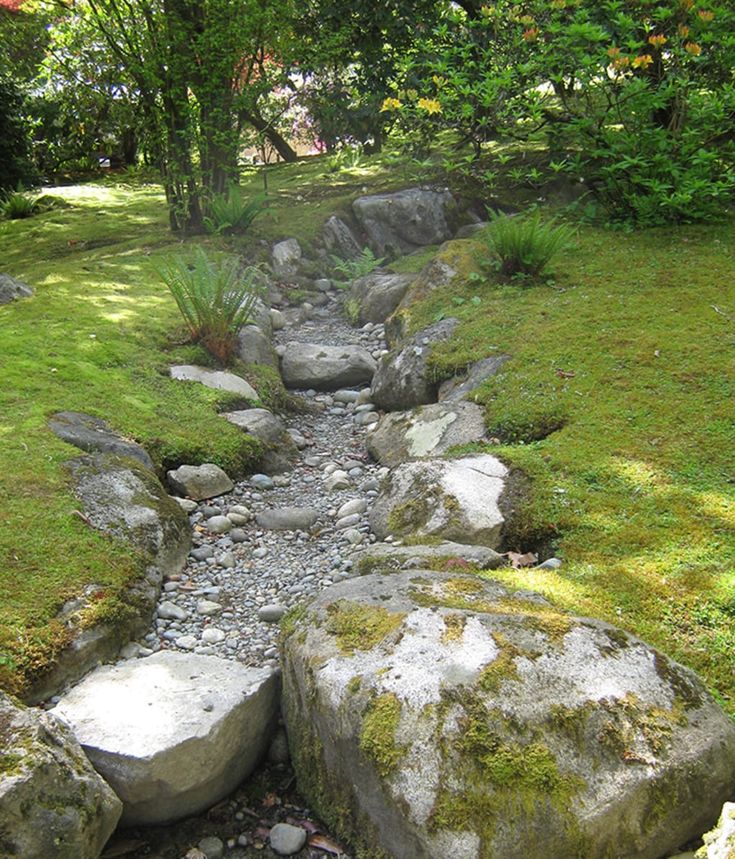When we think of rivers, we usually picture moving water that winds through beautiful scenery and is full of life. But there is another kind of river bed, one that is dry and seems to lack the energy that its wet cousin has.
But have you ever considered the critical purpose of a dry river bed? Is it just an ample, dry space, or does it play an essential and multifaceted role in our surroundings and aesthetic goals?
In this in-depth article, we’ll look at the meaning and uses of dry river beds, revealing their hidden complexities and essential contributions to the natural world and landscaping.
1. Managing the Flow of Water from Nature: Directing the Flood
One of the primary jobs of a dry river bed, called a wadi in some parts of the world, is to control the water flow during heavy rain or storms. These dry river beds act as natural channels, carefully directing and holding back excess water so that it doesn’t flood nearby areas and cause much damage.
In effect, the dry river bed acts as a buffer. It absorbs and slows down the torrential flow of water, slowly releasing it into the soil to feed thirsty plants and refill underground aquifers.
2. Guardians of The Earth: Stopping Erosion
Erosion is a force that never stops, but dry river beds stand firm against it. During drought, wind and water can wear away exposed soil, making the land less useful and removing rich topsoil.
But dry river beds, with their natural dips and curves, are nature’s way of protecting itself. They help rainwater move gradually, making it easier to soak into the ground. This elegant fix cuts down on the force of flowing water that wears away the land, protecting the landscape from erosion’s damaging grip.
3. Biodiversity and Habitat: A Place Where Life Can Live
Even though they look empty, dry river beds can teem with life, especially in places where it rains only occasionally. During the short but intense rainy seasons, water may briefly flow through these pathways, giving plants and animals a place to live that is both temporary and full of life.
Many desert and arid land species have learned to take advantage of the repetitive nature of dry river beds. They use them as breeding grounds, places to find food, and safe places to hide when the weather is terrible.
4. Recharging the Groundwater: The Aquifer’s Treasure Chest
Groundwater aquifers, secret sources of freshwater that keep life going, need dry river beds to refill. When rainwater gets into the ground through these pathways, it starts on a path. It moves through the soil and fills the water sources beneath.
This critical process is the lifeblood of places where surface water is scarce and highly valued, making sure that a steady flow of precious freshwater is always available.
5. Significance of Culture and History: Heritage’s Hidden Gems
Dry river beds often hold a lot of cultural and historical meaning for the people who live nearby. In many cultures, these sacred and timeless channels have been used as ancient trade routes, respecting these dry riverbeds. Still, it is also essential for protecting the rich cultural history of indigenous people and creating a link between the past, present, and future generations.
6. Value for Recreation and Art: Nature’s Beautiful Canvas
Some dry river beds, especially those in arid areas, showcase stark beauty that draws you in, embodying dry creek bed design ideas that transform rough, unforgiving settings into perfect spots for hiking, photography, and camping, among other activities. Many people find peace, inspiration, and a spiritual link in the striking beauty of dry river beds, which are nature’s magnificent canvas.
Conclusion
A dry river bed has much more use than it seems to have at first glance. These seemingly harsh natural features are essential for the expert management of water resources, the steady control of erosion, the care of biodiversity, the important refilling of groundwater aquifers, the protection of cultural heritage, and the enjoyment of recreation and beauty.
As long as we keep realizing and appreciating how vital these dry river beds are, we can work together to ensure they stay safe and are managed well.
By doing this, we ensure that these fantastic outlets will continue to do their essential jobs, enriching and protecting our constantly changing world.
Frequently Asked Questions
Are There Dry River Beds in All Parts or Storms?
Dry river beds are more common in arid and semi-arid areas, where rain falls irregularly, and water runs only sometimes. But there are different dry river beds worldwide, like arrows in the southwestern United States and wadis in the Middle East.
Can Dry River Beds Be Used for Farming or As Places to Live?
Even though dry river beds may have rich soil because of flooding and sediment deposition, they are usually not good places for farming or living. These places are hard to use for long-term human activities because water flows randomly, and flash floods can happen.
How Do Dry River Beds Help Wildlife and Nature?
For many plant and animal species, dry river beds are essential places to live and move. When it rains, they provide temporary water sources, places to breed, and places to find food for animals that are used to living in dry areas.
Does Climate Change Affect Dry River Beds?
In places with dry river beds, climate change can affect how often and how hard it rains. Changes in how it rains may cause harder-to-predict flows, which could affect the natural and human parts of these ecosystems. Higher temperatures can also speed up the rate at which water evaporates from these pathways.

